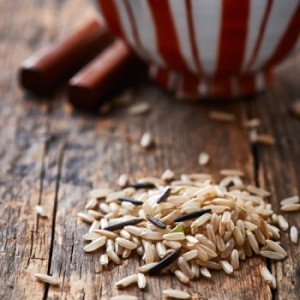 There are many different kinds of rice. According to U.S. Rice Producers, Americans eat about 25 pounds of this simple-to-make, gluten-free grain every year. There are more 40,000 varieties of rice, but you will likely come across these during your time in culinary school. Each kind of rice has its specific flavor and texture, as well as method of cooking. Here are some common varieties to consider using:
There are many different kinds of rice. According to U.S. Rice Producers, Americans eat about 25 pounds of this simple-to-make, gluten-free grain every year. There are more 40,000 varieties of rice, but you will likely come across these during your time in culinary school. Each kind of rice has its specific flavor and texture, as well as method of cooking. Here are some common varieties to consider using:
Long-Grain Rice
Just as the label says, these types of rice have longer grains. The typical rice used by many Americans is white or brown long-grain rice. Another kind you may be familiar with is basmati. This rice is often used in Pakistani and Indian cuisine. Cooking it requires more maintenance than other long rice varieties because it must be soaked for a half an hour before it is heated. Jasmine rice is another kind commonly found at grocery stores. It originates in Thailand. Each grain is whitish but slightly see-through, and the grains stick together more than other long varieties.
Medium-Grain Rice
Rices that are considered to be “medium-grain” tend to look more like an oval when they are uncooked. Sushi rice is often a medium-grain. Spanish paella is also made with this length of rice, a variety called Bomba. These rices are not sticky. Another version is called Kalijira. It is from Bengal, India, and is similar to basmati rice and cooked the same way.
Short-Grain Rice
If you have ever made risotto, you have likely used Arborio. This Italian short-grain rice contains amylopectin, a starch that makes it sticky and allows for the creation of the creamy risotto texture. Other possible grains used in the dish are vialone nano or carnaroli. There is also a short-grain rice variety that is brown and sticky.
Others
Wild rice is a grass seed that are not technically a rice. It is often grown in Minnesota and Canada and can be found in specialty grocery stores or supermarkets. This variety is especially chewy, and has a unique nutty flavor. When basmati and long-grain brown rice are bred, they create a new version called Wehani. This dark tan, long-grain rice is a hybrid that can be cooked in a rice cooker or pot. Another interestingly-colored species is Chinese black rice. This medium-grain rice is firm and tender but not sticky. People often use it to add a darker color to pilafs or as a plain side dish.

